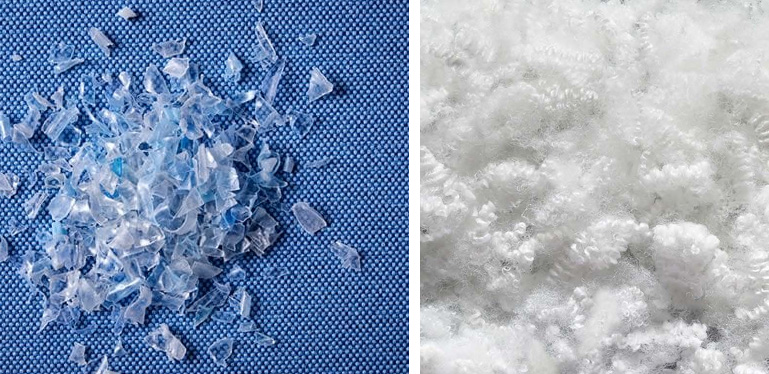Sustainable Materials
Stories
At sixteen3 we put extra care and attention into sourcing materials for our products. We look for recyclable, recycled and renewable material properties when designing our ranges, this ensures we keep our carbon footprint to a minimum and means our products are as good for the planet as they can be. We source FSC certified timber and work closely with our supply partners to ensure that wood products come from well-managed, sustainably forested, sources. We’re also leading the way with our use of alternative sustainable materials like Bamboo, Agricultural Fibre Board and Recycled Plastics which offer a plethora of environmental benefits over traditional materials, boasting accolades such as 100% recycled content, 100% recyclability and even negative carbon footprints.
Straw
An innovative and unexpected construction material.
We’re committed to replacing outdated and environmentally unfriendly materials across our range with innovative and sustainable alternatives. This commitment extends beyond the visual aesthetics of our products to their internal construction. For example our Sedir, Reece & Otto sofa frames are constructed using Agricultural Fibre Board. AFB is a sustainable material made from agricultural by-products such as straw and reeds, which would usually be composted or burned – releasing CO2 into the atmosphere.
AFB requires minimal energy to produce, reduces waste by utilizing agricultural waste materials and also has a carbon-negative footprint due to its inherent carbon-absorbing properties. The natural properties of this material mean it’s 100% recyclable, biodegradable and compostable!

Bamboo
The most eco-friendly wood alternative on the planet.
Bamboo is a sustainability superstar. It reaches harvestable maturity within a few years, unlike traditional hardwoods which take decades. After harvest, bamboo swiftly regrows from its extensive root system, making it an endlessly renewable resource, unlike regular timber which kills the tree upon harvesting. Not only is bamboo fast-growing, but it’s also a CO2 champion. It absorbs more carbon dioxide (CO2) than traditional hardwood forests and releases 35% more oxygen. This eco-friendly powerhouse plays a vital role in combating climate change.
Experience the versatility of bamboo across many of our product ranges, including in Calvert panels & display boxes, Bodyn slats, Reece frames & Milo table tops.

Recycled Plastic
All the material benefits without the bad reputation.
Plastics are the classic “bad guy” of the materials world. Convenient, cost-effective to produce, and designed to be durable and long-lasting. At face value, this sounds fantastic. But when linked to modern throwaway culture, we have a recipe for one of the most pressing environmental issues on the planet – plastic pollution. The good news is that this leftover, durable waste can be recycled repeatedly into new material. Not only does manufacturing new products from recycled plastic help prevent pollution, but it’s also a much more sustainable process. Producing a plastic bottle from recycled PET uses 75% less energy than virgin plastic. Innovative recycled plastic materials are becoming more available, with vast ranges of colours and designs which celebrate the environmental story of the material. Recycled plastic frames and table tops can be used in our Reece sofa range, championing its sustainability story.

Wool
A traditional heritage classic with ancient origins.
The use of wool to create fabric dates back thousands of years, evidence suggests that wool was being used to make fabric as early as 6000 BCE. Even today wool still dominates the upholstery fabric markets, as an excellent durable, resilient, luxurious and highly sustainable choice. Wool is a renewable biodegradable material with naturally flame retardant properties, meaning no extra chemicals are needed to meet safety regulations. Produced with minimal energy, wool has a low carbon footprint compared to synthetic alternatives. Wool fabrics also support local economies and rural communities involved in sheep farming and production. Opting for wool-based upholstery fabric reflects a dedication to sustainability, comfort, and timeless elegance. It’s no wonder wool has withstood the test of time so effectively!

Recycled Polyester
A plastic with many purposes.
Recycled polyester has multitude of applications within furniture manufacturing, encompassing both functional internal fibre fillings and aesthetic, tactile upholstery fabrics.
It serves as a sustainable and eco-friendly option for fibre filling materials, achieved through the processing and repurposing of post-consumer polyester waste such as discarded plastic bottles and textile scraps. This approach not only diverts these materials from landfills but also reduces the demand for virgin polyester production. Numerous fabric manufacturers now are utilising plastic waste to produce durable and vibrant upholstery fabrics. Many of these manufacturers actively participate in initiatives like SEAQUAL, dedicated to cleaning up and extracting value from plastic waste found in our oceans.

Reconstituted Foam
Waste material gets a comfortable new lease of life.
We endeavour to use recycled materials wherever possible in our products. one example is our use of reconstituted foam, also known as rebonded foam. This material is produced from foam offcuts which would typically be discarded during the manufacturing process. By switching standard foams for reconstituted foam wherever possible, we’re doing our bit to minimize waste and contribute to a circular economy. As part of our sustainability pledge, we take responsibility for our own manufacturing waste and recycling practices. Our own foam offcuts are collected and returned to our trusted suppliers, who re-process them into new usable products. It’s a remarkable cycle where waste transforms into valuable resources. In fact, there’s a chance that these repurposed materials might even find their way back into our own factory!

